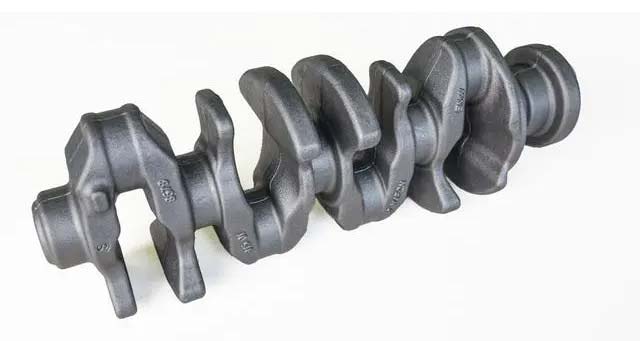- Contact Innally, Let you purchase forgings in China more favorable prices, products more assured!
- Hotline:+(86)15038323776 Email:innally@innally.com
How to make high quality crankshaft forgings?
- Category: Aluminium alloy forging, Forgings for construction
- |
- Date: 17/10/2023
the manufacture of high-quality crankshaft forgings requires strict control of the key aspects of material selection and treatment, forging process, machining, heat treatment and quality control. Through continuous optimization of the production process and technological innovation, the quality and production efficiency of crankshaft forgings can be improved, costs can be reduced, and the needs of automobile manufacturers can be met.
Product Details
Crankshaft forging is one of the important parts in automobile engine, and its manufacturing process needs to go through many complex steps and strict quality control. The key steps and technical requirements for manufacturing high quality crankshaft forgings are described below.
First, material selection and treatment
The crankshaft forgings are usually made of alloy steel or high-strength aluminum alloy. Select the appropriate material and chemical composition according to the performance of the engine and the requirements of the automobile manufacturer. The treatment of materials includes smelting, casting, heat treatment and other processes. To manufacture high-quality crankshaft forgings, the quality and stability of these processes must be strictly controlled.
Two, forging process
Forging is one of the key steps in manufacturing crankshaft forgings. In the forging process, the metal material is heated to a high temperature and then molded and processed through a mold. High quality crankshaft forgings need to have precise geometry and dimensions, so the appropriate die and forging process must be selected. At the same time, in the forging process to strictly control the temperature, deformation and cooling speed and other factors.

Third, mechanical processing
The crankshaft forgings after forging need to be machined to obtain the desired precision and surface quality. The machining process includes turning, milling, drilling, reaming, etc. In the machining process, high-precision CNC machine tools and tools should be used to strictly control cutting parameters and tool wear to maintain the accuracy and quality of crankshaft forgings.
- Heat Treatment
Heat treatment is one of the important steps to improve the mechanical properties of crankshaft forgings. Common heat treatment methods include quenching, tempering, surface hardening and so on. In the heat treatment process, factors such as temperature, time and cooling speed must be strictly controlled to obtain ideal mechanical properties and surface quality.
- Quality inspection and control
High quality crankshaft forgings need to pass strict quality inspection and control. Test items include geometric size, shape accuracy, surface quality, mechanical properties, etc. Adopt advanced testing equipment and instruments, such as laser measuring instrument, hardness tester, spectrum analyzer, etc., to carry out comprehensive testing of crankshaft forgings to ensure that design requirements and quality standards are met.
- Continuous improvement of the production process
In order to continuously improve the quality and production efficiency of crankshaft forgings, enterprises need to continuously improve the production process. Optimize production processes and process parameters by collecting and analyzing production data to identify and resolve potential problems. Promote the automation and digitization of production processes, improve the accuracy and reliability of production equipment, reduce manual intervention, reduce errors and waste.
In short, the manufacture of high-quality crankshaft forgings requires strict control of the key aspects of material selection and treatment, forging process, machining, heat treatment and quality control. Through continuous optimization of the production process and technological innovation, the quality and production efficiency of crankshaft forgings can be improved, costs can be reduced, and the needs of automobile manufacturers can be met.
nannan
INNALLY website editing, to provide you with forging related information
Related Products
Search
Forging center
- Steel forgings
- Aluminium alloy forging
- Titanium alloy forging
- Stainless steel forging
- Copper forging
- Automotive forgings
- Locomotive forging
- Bicycle forgings
- Motorcycle forging
- Rigging and fasteners
- Bearing forging
- Electric power fittings
- Marine forging
- Mechanical forgings for metalworking
- Mining machinery forgings
- Marine engineering forgings
- Construction machinery forgings
Popular product

© 2025. All Rights Reserved.






